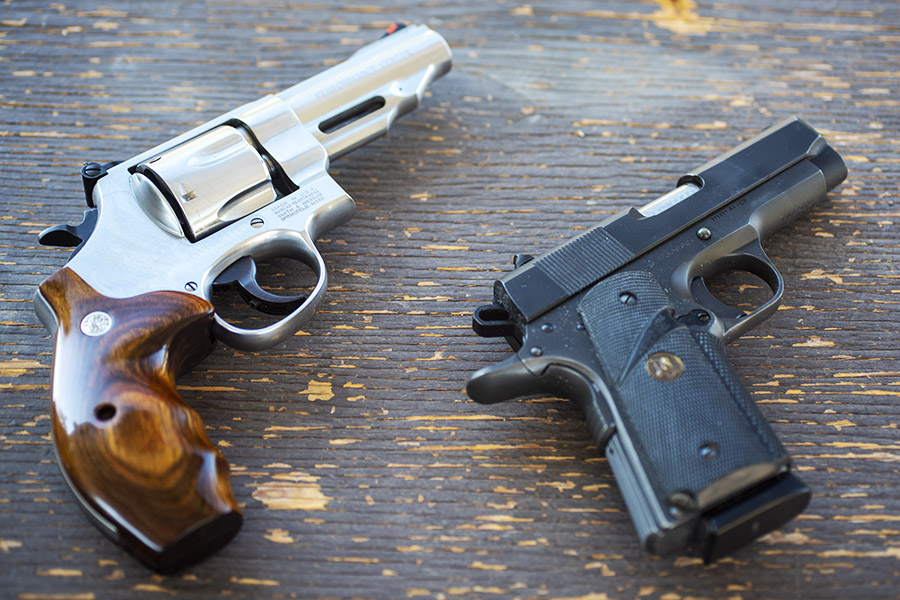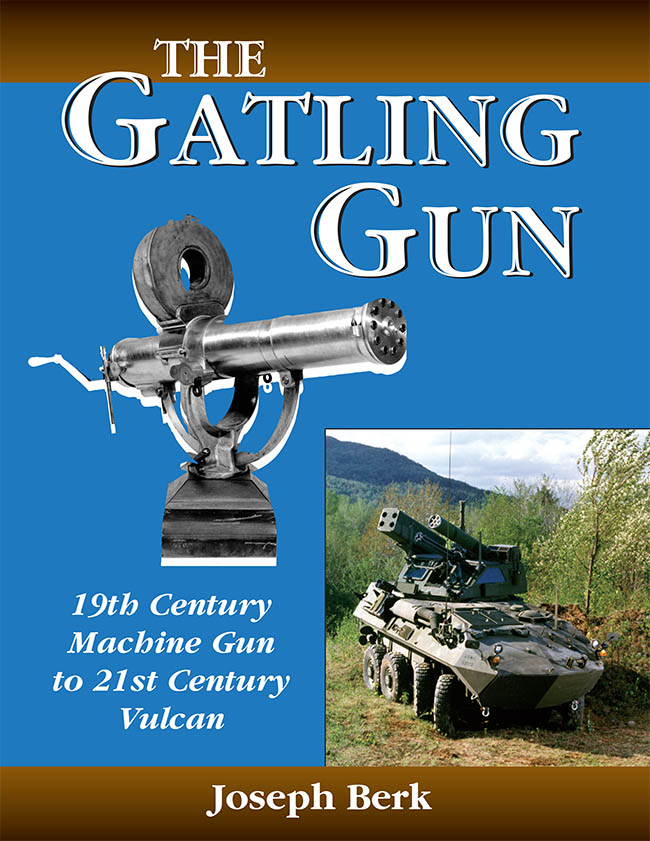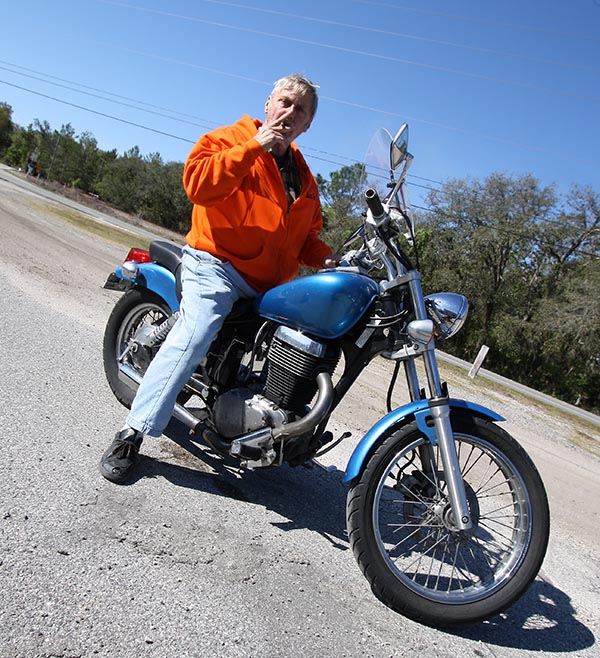This is an interesting story about the development of the .45 ACP 1911 and a sister military sidearm, the 1917 revolver, and maybe a little more. To really appreciate the history of these two guns, we need to consider three cartridges (the .45 Colt, the .45 ACP, and the .45 AutoRim), and four handguns (the 1873 Colt Single Action Army, the Model 1911 Colt, the Model 1909 Colt revolver, and the Model 1917 revolvers). Wow, that’s a mouthful. But it’s a fascinating story.
So what is this story about? A tale of two .45s, or of four?
The Two .45 Handguns
Well, it started out as a tale of two…the 1911 Rock Island and my Model 625 Smith and Wesson. But I’m getting ahead of myself. Read on..
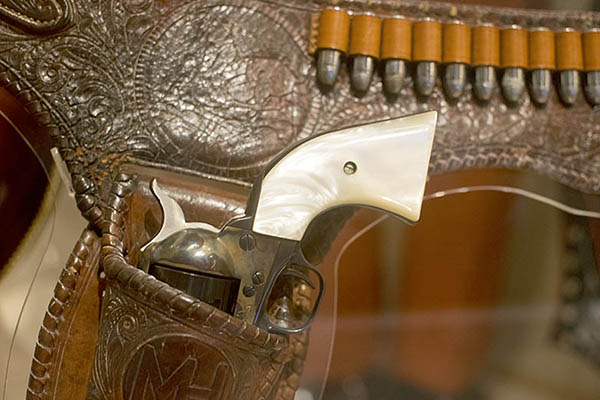
.45 ACP Historical Perspective
To best understand this, we need to go back to 1899, and maybe as far back as 1873. Yep, this tale goes back a century and a half.
In 1899, the Philippine-American War started (it’s also known as the Philippine Insurrection). We sent US Army troops armed with .38-caliber revolvers, Krag rifles, and 12-gauge shotguns to put down the insurrectionists (the Moros), and we found out the hard way that the .38 just wouldn’t cut it as a military sidearm.
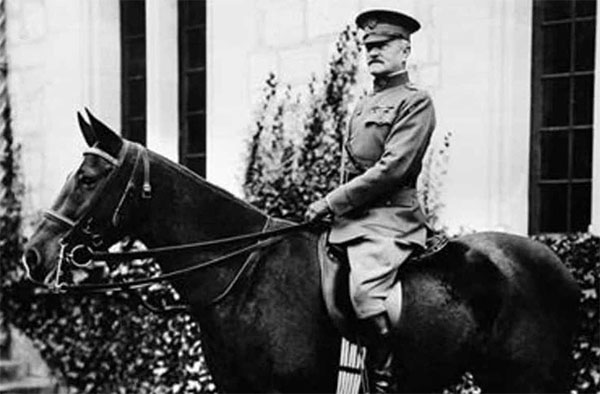
In response to this, or so the story goes, the Army tried all kinds of handgun ideas, including the then-new 9mm Luger. There was a lot more to the story than just the concept that the .38 wasn’t enough gun, but it’s the version that is most frequently bandied about and we’ll stick with it to keep things simple. You hear about drug-crazed Moro insurgents, you hear about religious fanatics, and more. I don’t know which parts are true and which parts are, to use a current term, fake news. But I do know that as a result of that war, the Army wanted a handgun with more power.
The idea of a semi-automatic handgun was cool, but the Army thought the Luger was too complicated and the 9mm cartridge wasn’t much better than the .38. The .38 and 9mm bullets are essentially the same diameter (one is 0.356 inches, the other is 0.358 inches), and neither had enough knockdown power.
Our Army went back to an earlier cartridge, the .45 Colt, a rimmed cartridge used in the old 1873 Single Action Army Colt. It’s the six shooter that you see in the old cowboy movies (the one holstered in the photo at the top of this blog). The old 1873 was a single action sixgun (you had to pull the hammer back for each shot). By the time the Moro Wars rolled around, both Colt and Smith and Wesson had double action revolvers. On those, all you had to do was pull the trigger (that cocked the action and fired the weapon). To meet the new need in the Philippines, Colt manufactured double action revolvers (their Model 1909) chambered in the .45 Colt round. The Army was all for it, and they felt it met their needs (at least on an interim basis).
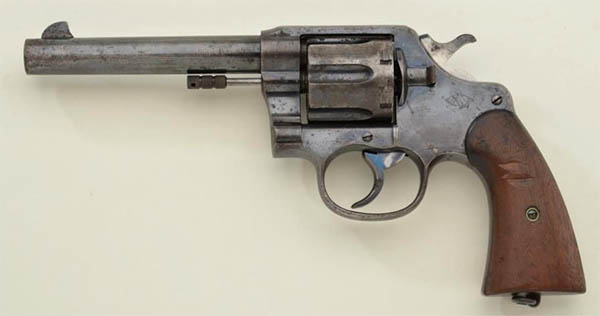
Having played with the Luger, though, the Army liked the idea of a semi-automatic handgun. But that puny 9mm round wasn’t enough back in those days, so the Army invited firearm manufacturers to submit larger caliber automatic pistol designs.
The 1911
The winner, of course, was John Browning’s 1911 design, and the .45 auto came into being as the US Army Model of 1911. It was a new gun and a new cartridge. The 1911 couldn’t shoot the rimmed .45 Colt cartridge used in the 1873 Peacemaker and Colt’s double action Model 1909 handguns. Instead, it used a new .45 ACP round (“ACP” stands for Automatic Colt Pistol), which fired the same big .45-inch-diameter bullet in a rimless cartridge case (actually, the cartridge has a rim, but the rim is the same diameter as the rest of the cartridge case, and that allowed it to work in the new semi-auto).
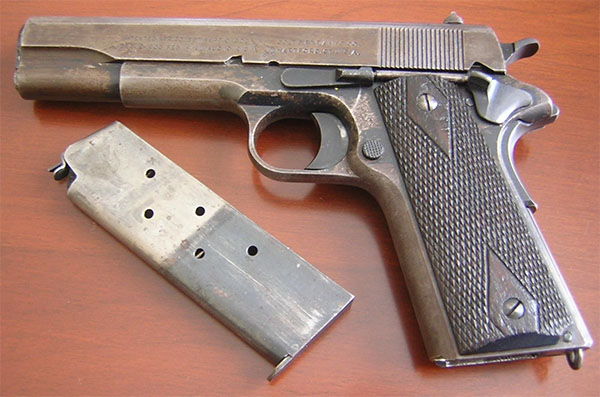
The 1917 Colt and Smith and Wesson Revolvers
Fast forward a few more years and World War I started. The Army’s preferred handgun was the 1911, but there weren’t enough of the new semi-autos. Colt, and Smith and Wesson came to the rescue by modifying their earlier big bore revolver designs to shoot the .45 ACP cartridge, and the Army issued these as the Model 1917 revolver.
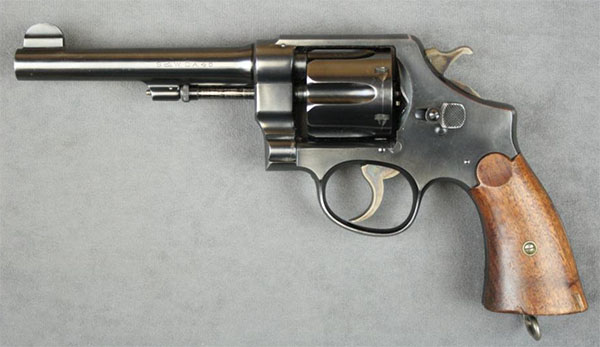
The 1917 double action .45s were phased out of the Army a few years after World War I ended, and they were sold as surplus to the public (things were different back then). Model 1917 revolvers are highly collectible today. I owned an original GI issue Colt Model 1917 back in the 1970s, when you could pick them up for about a hundred bucks. I loved that revolver, but I stupidly sold it 40 years ago. (When discussing firearms, the phrase “stupidly sold” is inherently redundant. Like nearly all of the guns I’ve sold, I wish I still had it.)
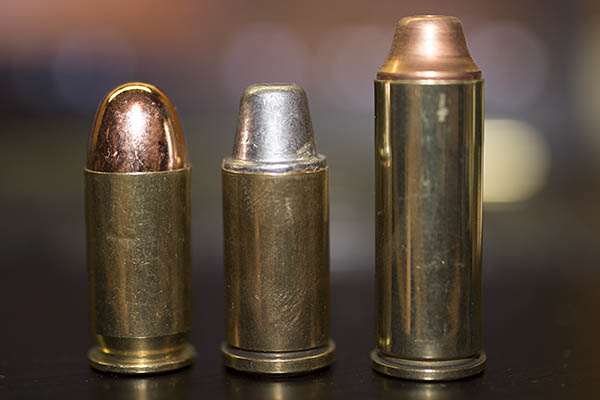
The 1911 .45 auto? It continued as the official US Army sidearm for the next seven decades. I carried one when I was in the Army. Like a lot of shooters, I think it is the best handgun ever.
In 1985, the Army replaced the 1911 with the 9mm Beretta. That (in my opinion) was a dumb move, and apparently the Army ultimately came to its senses with regard to the Beretta, but they stuck to the 9mm Luger round (now the NATO standard pistol cartridge) when they went to a Beretta replacement. The Beretta is being replaced by yet another 9mm (the SIG).
The Model 625 Smith and Wesson
No matter; there are still many of us who consider the 1911 in .45 ACP the ultimate sidearm. I’m one of those guys, but I’m also a huge fan of the double-action revolver in .45 ACP. The good news for me (and you, too, if you’re a .45 auto fan) is that Smith and Wesson still makes a modern version of their double-action revolver in this cartridge. It’s the Model 25 Smith (or, in stainless steel, the Model 625), and it’s a direct descendent of the old 1917 revolver.
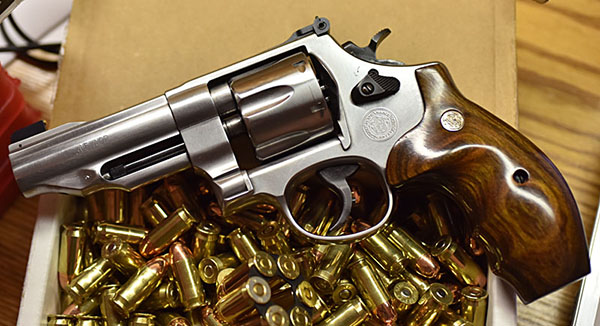
The Rock Island 1911 Compact
I am a lucky guy. I own both the .45 ACP Model 1911 and the .45 ACP Smith Model 625. You’ve read the earlier ExNotes blog about my Rock Island Compact 1911. It’s a sweet shooter and, at just under $500, it’s a hell of deal. And that Model 625? Wow. The Performance Center is Smith’s custom shop, and that revolver is accurate. It should be; it costs twice what the Rock Island 1911 goes for. But both guns are great, and I love shooting both.
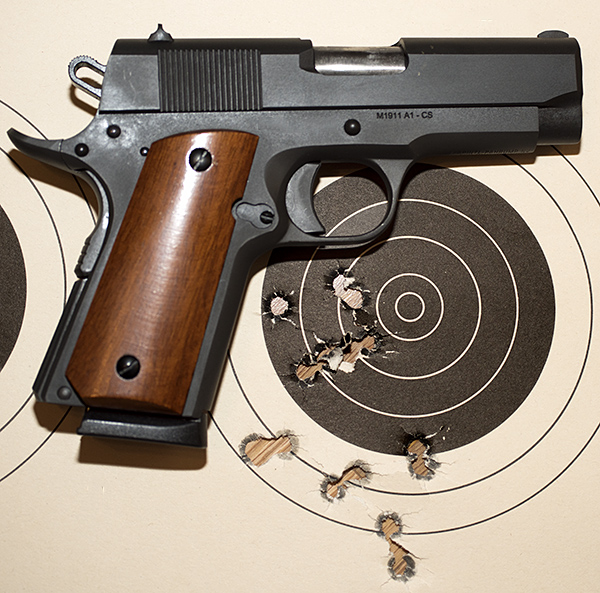
I had both of my .45s out at the range yesterday, and I had a blast (pun intended). Yeah, the revolver is a more accurate handgun than the 1911, but like we used to say in the Army, both are close enough for government work.
.45 ACP Accuracy
So just how well do these guns shoot? The short answer is very, very well. After running through a couple of hundred rounds, I thought it might be a good idea to set up two targets, side by side, and fire six rounds at each (the first six with the 1911, and the second six with my revolver). That’s exactly what I did, and it’s the final photo for this story…

Hit those pop up ads! It’s what keeps the lights on!
The Follow Up: Another Tale of Two 45s
If you enjoyed this post, be sure to see the follow up: Another Tale of Two 45s!
The Gatling Gun
Incidentally, if you like reading about guns and their history, you might want to pick up a copy of The Gatling Gun. I wrote that book, and it covers the early days of the Gatling (the Civil War), the transition to a modern weapon system after World War II, and modern Gatling applications on high-tech weapon systems. I worked on many of these systems, and I worked for the company that manufactured 30mm ammo for the A-10 Warthog. You can read all about that in The Gatling Gun, available from Amazon.
Help us keep the lights on:
Want more gun stories? You can see all of our gun articles here on Tales of the Gun!
Like what you see here? Hey, sign up for a free subscription to the ExNotes blog!

